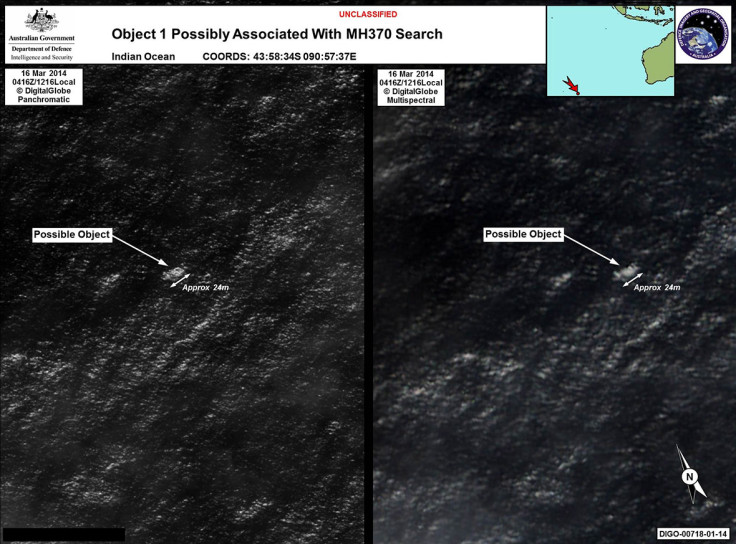Malaysia Airlines Flight MH370: Large Floating Objects Found in Indian Ocean

Two objects of "reasonable size" have been seen floating in the southern Indian Ocean by a satellite, raising a flicker of hope of tracing Malaysia Airlines flight MH370.
The Australian Geospatial-Intelligence Organisation has launched an intensive probe to determine the nature of the objects.
The largest object is about 24 metres (78 feet) in length, and appeared to be bobbing up and down the surface of the water, according to the Australian Maritime Safety Authority (Amsa), which is reviewing the satellite imagery.
Another, smaller object was also spotted, while a number of smaller images seemed to be scattered around the larger object.
"It's possible that they may find even the vertical fin floating, and that stuff will float because it's full of air," Gordon Dupon, a former Transportation Safety Board investigator, told CBC News.

Four aircraft, including a P3 Orion, have been dispatched to the area where the objects were sighted by Amsa.
Five merchant ships in the surrounding area have also responded to messages broadcast by Australia's Rescue Coordination Centre (RCC). One of the merchant ships is expected to arrive after a couple of hours, while a Royal Australian Navy ship is days away.
"New and credible information has come to light in relation to the search for Malaysia Airlines flight MH370 in the southern Indian Ocean. The Australian Maritime Safety Authority has received information based on satellite imagery of objects possibly related to the search," Australian Prime Minister Tony Abbott told a briefing.
"Following specialist analysis of this satellite imagery, two possible objects related to the search have been identified," he said.
However, he cautioned that it "may turn out that [the objects] are not related to the search for flight MH370".
Amsa's John Young also said that the floating objects constitute the best lead they have right now, but that they "need to get there, find them, see them, assess them to know whether it's really meaningful or not."
"What we're looking for is confirmation that it does belong to the aircraft or does not." When asked whether specific items such as plane windows were visible, he replied: "The imagery is not that precise."
"The objects are relatively indistinct. Those who are expert say they are credible sightings."
Experts have suggested that the southern Indian Ocean is the most likely place for finding the missing plane, as all the other corridors are heavily protected by radars of south and east Asian countries.
Military planes from Australia, the US and New Zealand had recently scaled down the search area from 600,000 sq km (232,000 sq m) to 305,000 sq km (117,000 sq m).
As many as 26 nations are involved in the search, but previous sightings of possible debris had been dismissed as false leads.
ABC correspondent on board US Navy P-8 tweeted that they were getting "significant radar returns" from the site, and the new sightings are being followed as the most convincing leads since the plane vanished.
© Copyright IBTimes 2025. All rights reserved.



















